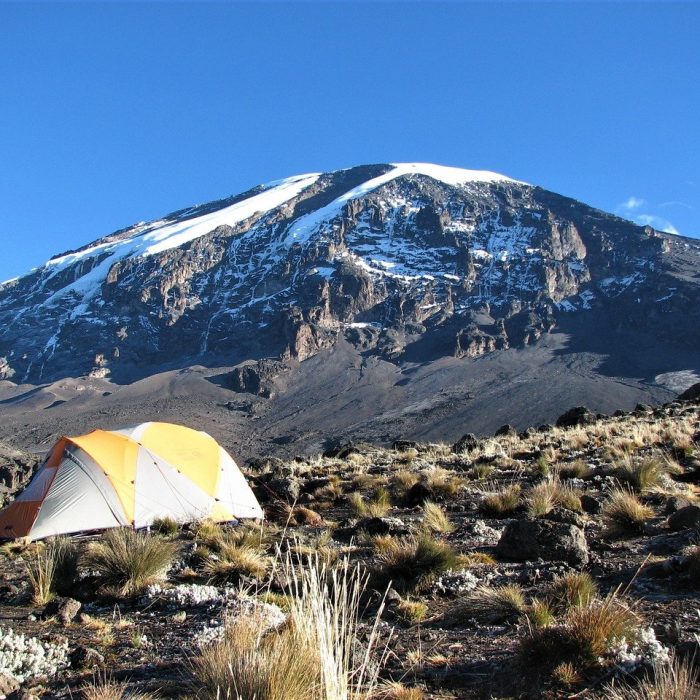Marangu

Details
This trek utilizes a popular route for many climbers. The Marangu route, famously known as the “Coca-Cola” route, is the original route established to climb Kilimanjaro. The Marangu route is often billed as one of the easier walking routes, however, it suffers from the lowest success rate because of poor acclimatiza-
tion. Approaching Mount Kilimanjaro from the southeast, the Marangu route uses the same ascent and descent route. Marangu is the only route that offers dormitory-style hut accommodation. The huts have a communal dining room, simple washrooms and toilets which lower down will be flushable, but as you move higher up the mountain will be “long drop” loos. Although some climbers like the idea of staying in the huts rather than camping, you need to remember that on the Marangu route you will be sharing the hut with lots of other climbers in open dormitory accommodation. Summit day begins at midnight providing the best chance to reach the top.
Itinerary
Inclusions & Exclusions
INCLUDED: • Accommodation as listed on the itinerary as well before and after the trip • Transfers to and from Kilimanjaro International Airport • Transfers to and from Kilimanjaro Gate • Emergency Evacuation Insurance through Arusha Medivac • English speaking guide • Drinking water • All national park and camping fees • Government taxes • Camping equipment – 4 season waterproof tents, sleeping bags, sleeping pads • Private portable toilet • 3 meals a day.
NOT INCLUDED: • Tips • Items of a personal nature • Tanzanian Visa, paid on arrival • International flights.




